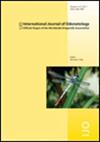Environmental impacts from human activities affect the diversity of the Odonata (Insecta) in the Eastern Amazon
IF 1
4区 农林科学
Q3 ENTOMOLOGY
引用次数: 4
Abstract
Land use influences the biodiversity of stream systems by changing the chemical composition of the water and the physical structure of the habitat. The present study evaluated the influence of these processes on the diversity metrics of Odonata at regional and local scales, testing the hypothesis that the two odonate suborders Anisoptera and Zygoptera will respond differently to habitat and landscape variables. The study focused on 13 sites in the municipality of Barcarena, Pará, Brazil. We found no significant impact from regional factors, although anisopterans were more affected by water temperature and Habitat Integrity Index (HII). The HII indicated that the local forest was stable, but anisopteran richness was negatively correlated with HII. It was indicating that these species favoured open areas with less riparian cover. Even though zygopterans did not exhibit a similar systematic pattern, the reduced abundance of Chalcopteryx rutilans, a species associated with better-preserved habitats, may indicate that some sites lack the habitat integrity necessary to establish populations of this species. These findings highlight the importance of preserving the riparian forest to maintain the health of the stream systems. We recommend more studies that focus on the broader geographic and temporal scales to account for factors such as the anthropogenic gradient and historical land use patterns.人类活动对环境的影响影响了东亚马逊地区昆虫的多样性
土地利用通过改变水的化学成分和栖息地的物理结构来影响溪流系统的生物多样性。本研究在区域和地方尺度上评估了这些过程对Ododata多样性指标的影响,验证了两个齿亚目Anisoptera和Zygoptera对栖息地和景观变量的反应不同的假设。这项研究的重点是巴西帕拉Barcarena市的13个地点。我们没有发现区域因素的显著影响,尽管异翅目受水温和栖息地完整性指数(HII)的影响更大。HII表明当地森林是稳定的,但异翅目丰富度与HII呈负相关。这表明这些物种喜欢河岸覆盖较少的开阔地带。尽管zygopters没有表现出类似的系统模式,但Chalcopteryx rutilans(一种与保存较好的栖息地相关的物种)的丰度降低可能表明,一些地点缺乏建立该物种种群所需的栖息地完整性。这些发现强调了保护河岸森林对保持河流系统健康的重要性。我们建议更多关注更广泛的地理和时间尺度的研究,以考虑人为梯度和历史土地利用模式等因素。
本文章由计算机程序翻译,如有差异,请以英文原文为准。
求助全文
约1分钟内获得全文
求助全文
来源期刊

International Journal of Odonatology
ENTOMOLOGY-
CiteScore
2.30
自引率
0.00%
发文量
15
审稿时长
>12 weeks
期刊介绍:
International Journal of Odonatology (IJO) is aimed at providing a publication outlet for the growing number of students of Odonata. It will address subjects such as the ecology, ethology, physiology, genetics, taxonomy, phylogeny and geographic distribution of species. Reviews will be by invitation, but authors who plan to write a review on a subject of interest to the journal are encouraged to contact the editor.
 求助内容:
求助内容: 应助结果提醒方式:
应助结果提醒方式:


